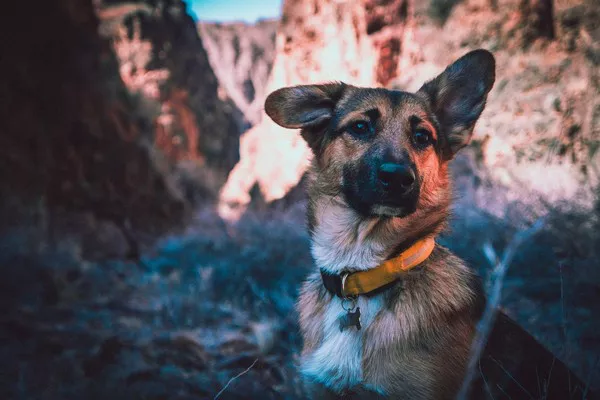Ragdoll cats are renowned for their striking blue eyes, silky coats, and gentle, affectionate nature. They are a beloved breed among cat enthusiasts, known for their unique personality traits and strong bonds with their owners. This article explores the various ways Ragdoll cats show affection, offering insights into their behavior, and providing tips for building a deeper bond with these loving felines.
Overview of the Ragdoll Breed
Ragdoll cats are a relatively modern breed, originating in the 1960s in California. Ann Baker, a breeder in Riverside, developed the breed by crossing domestic longhaired cats with distinct Siamese markings and Persian-type cats. The result was a large, affectionate cat with a semi-longhaired coat and a calm demeanor.
Ragdolls are known for their placid temperament and affectionate nature. They are often described as “puppy-like” because of their tendency to follow their owners from room to room and their willingness to be picked up and carried around. Unlike many other breeds, Ragdolls often go limp when held, hence the name “Ragdoll.” This breed is also characterized by their striking appearance: they have large, blue eyes, a silky, medium-length coat that resists matting, and color-pointed patterns similar to those seen in Siamese cats.
Personality Traits
Ragdolls are typically docile, calm, and friendly. They are known for being particularly good with children and other pets, making them an excellent choice for families. Their laid-back nature means they are less likely to be skittish or aggressive, even in new environments or around strangers.
Despite their calm demeanor, Ragdolls are also playful and enjoy interactive toys and games that stimulate their minds and bodies. They are intelligent cats that can be trained to perform tricks and commands, adding to their appeal as companions.
Signs of Affection
Ragdolls, like all cats, have unique ways of expressing their affection. Understanding these behaviors can help owners better appreciate the loving nature of their feline friends.
Headbutting
Headbutting, or bunting, is a common way cats, including Ragdolls, show affection. This behavior involves the cat gently pressing its forehead against its owner’s body. Headbutting is a sign of trust and marks the owner with the cat’s scent, reinforcing the bond between them.
Purring
Purring is one of the most recognizable signs of a content and affectionate cat. When a Ragdoll purrs, it often indicates they feel safe and happy. While cats can also purr when in pain or distress, a relaxed, rhythmic purr while being petted or cuddled is usually a sign of affection.
Following Their Owner Around
Ragdolls are known for their sociable nature and often follow their owners around the house. This behavior demonstrates their desire to be close to their human companions and participate in their activities. It’s a clear sign of attachment and affection.
Slow Blinking
Slow blinking, or “cat kisses,” is a subtle yet powerful way Ragdolls express their love. When a cat looks at its owner and slowly blinks, it’s a sign of trust and affection. Owners can reciprocate this gesture to reinforce the bond.
Kneading
Kneading, or “making biscuits,” involves a cat rhythmically pushing its paws against a soft surface, such as its owner’s lap. This behavior, reminiscent of kittenhood when they kneaded their mother for milk, is a sign of comfort and contentment.
Bringing Gifts
Although it might seem unpleasant to receive a dead mouse or bird, in the feline world, this is a high compliment. When a Ragdoll presents its owner with a “gift,” it’s sharing its prized catch, indicating a strong bond and affection.
Licking and Grooming
Cats groom each other as a sign of affection and trust. When a Ragdoll licks or grooms its owner, it’s showing love and acceptance. This behavior helps strengthen the bond between cat and owner.
Understanding Cat Behavior
Interpreting a Ragdoll’s behavior correctly is crucial for understanding their expressions of affection.
Body Language
A Ragdoll’s body language can provide many clues about its feelings. A relaxed, loose body posture typically indicates a happy and affectionate cat. Purring, slow blinking, and headbutting are clear signs of contentment and love.
Tail Position
A Ragdoll’s tail can also convey a lot about its mood. A tail held high often signifies happiness and confidence. If the tail is quivering while in this position, it usually means the cat is excited to see you and is displaying affection.
Vocalizations
Ragdolls are generally quieter than many other breeds, but they do communicate through soft, gentle vocalizations. A Ragdoll that meows or trills at its owner is likely trying to engage and show affection.
Affection on Their Terms
While Ragdolls are known for their affectionate nature, they, like all cats, express love on their own terms. Respecting their boundaries is crucial for maintaining a strong bond.
Respecting Boundaries
It’s important to recognize when a Ragdoll wants attention and when it needs space. Pushing a cat to interact when it prefers to be alone can lead to stress and anxiety. By respecting these boundaries, owners can foster a more trusting and affectionate relationship.
See Also:Ragdoll Cat Cost in the UK
Reading the Signs
Learning to read a Ragdoll’s signals helps owners understand when their cat wants affection. Signs like rubbing against you, headbutting, or following you indicate a desire for interaction. Conversely, retreating or hissing means the cat needs some alone time.
Building a Bond
Strengthening the bond with a Ragdoll requires patience, understanding, and a few practical steps.
Interactive Play
Engaging a Ragdoll in interactive play is a great way to build a bond. Toys that mimic prey, such as feather wands or laser pointers, can stimulate a cat’s hunting instincts and provide valuable bonding time.
Positive Reinforcement
Using positive reinforcement, like treats and praise, when a Ragdoll exhibits affectionate behavior can encourage more of the same. Rewarding behaviors like purring, headbutting, or kneading helps reinforce these actions as desirable.
Consistent Routine
Cats, including Ragdolls, thrive on routine. Regular feeding times, play sessions, and grooming help create a sense of security and trust, strengthening the bond between cat and owner.
Grooming Sessions
Regular grooming sessions can be a bonding experience. Brushing a Ragdoll not only keeps its coat healthy but also provides an opportunity for physical contact and affection.
Health and Affection
A cat’s health can significantly impact its behavior and displays of affection.
Regular Vet Checkups
Regular veterinary checkups are essential to ensure a Ragdoll is in good health. Health issues can lead to behavioral changes, including a decrease in affectionate behaviors.
Understanding Health-Related Changes
If a typically affectionate Ragdoll suddenly becomes withdrawn or aggressive, it may be experiencing health problems. Dental issues, arthritis, or other illnesses can cause discomfort, leading to changes in behavior.
See Also:How Big Can a Ragdoll Cat Get?
Mental Health
Mental stimulation is just as important as physical health. Boredom or anxiety can affect a Ragdoll’s behavior, so providing a stimulating environment with plenty of toys, scratching posts, and interaction is crucial.
FAQs
Are Ragdoll cats more affectionate than other breeds?
Ragdolls are known for their affectionate nature, often more so than many other breeds. Their docile temperament and tendency to seek human companionship make them particularly loving pets.
Do Ragdolls get along with other pets?
Yes, Ragdolls generally get along well with other pets. Their calm and friendly nature makes them suitable companions for other cats and even dogs.
How much attention do Ragdoll cats need?
Ragdolls thrive on attention and enjoy being around their owners. While they can be independent at times, they do best in households where they receive plenty of interaction and affection.
Can Ragdolls be left alone during the day?
Ragdolls can be left alone for periods, but they do best with some company. If owners work long hours, having another pet or providing plenty of toys and enrichment can help keep a Ragdoll content.
Do Ragdoll cats like to cuddle?
Yes, Ragdolls are known for their love of cuddling. They often enjoy being held and will go limp in their owner’s arms, showing their trust and affection.
How do I know if my Ragdoll is happy?
A happy Ragdoll will exhibit behaviors such as purring, headbutting, following you around, and kneading. A relaxed body posture and slow blinking are also good indicators of contentment.
Conclusion
Owning a Ragdoll cat is a rewarding experience filled with affection and companionship. Understanding the unique ways these cats show their love helps strengthen the bond between pet and owner. By respecting their boundaries, providing consistent routines, and ensuring their health and happiness, owners can enjoy the deep affection and loyal companionship that Ragdoll cats are known for. The joys of having a Ragdoll extend beyond their beautiful appearance; their loving nature and gentle demeanor make them truly special members of the family.
Related Topics:






















